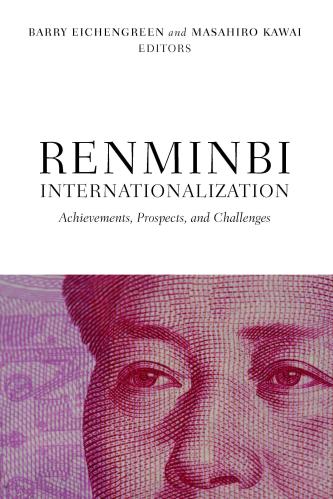Content from the Brookings Institution India Center is now archived. After seven years of an impactful partnership, as of September 11, 2020, Brookings India is now the Centre for Social and Economic Progress, an independent public policy institution based in India.
Almost four months after first suggesting that it would begin a process of tapering its monthly liquidity infusions of $85 billion, the United States Federal Reserve Board decided that the time wasn’t quite right to do it. This four-month period has been amongst the most turbulent phases for international capital flows and currency markets since the precipitation of the financial crisis almost five years ago.
The sole trigger for this turbulence was the suggestion of tapering by the Fed. Therefore, the question has to be asked: if the Fed had doubts about the appropriateness of tapering given the state of the US economy, why did it go ahead and make such a suggestion? If this hadn’t happened, it is quite possible that the turmoil that rocked the emerging market economies would not have materialised. But that is hindsight. Now that the turbulence appears to be behind us, at least for a while, what lessons might we learn from the episode, which policy makers would unanimously hope will never recur?
The first lesson is the complete internationalisation of monetary policy transmission, which could have both positive and negative consequences, depending on the situation. When the Fed announced its second round of quantitative easing, or QE2, in October 2010, there was a strong expression of concern from the emerging market economies, led by Brazil, about its adverse impact. Specifically, the worry was that the liquidity injections would induce huge capital inflows into these economies, causing sharp currency appreciation and, consequently, loss of export competitiveness, which would undermine their ongoing recovery. The response to this was that the Fed had to do what was in the US economy’s best interests; nowhere in its mandate was it expected to take cognisance of the impact of its actions on other economies. Besides, a US recovery, the motivation of QE2 in the first place, was also good for the rest of the world, particularly the emerging market economies that had significant exports to the US.
Subsequent events did not reinforce that incipient acknowledgement of the potentially negative externalities from US monetary policy. But the last four months have amply demonstrated their significance. Like financial regulation before it, the discussion of monetary policy must also enter the realm of “global public goods”. Even if central banks are governed by national interest mandates, a “do no harm” principle must be given some consideration. Perhaps the economic costs of the turbulence of the past four months are temporary and will fade with time. But what if they are not and the impact on overall macroeconomic health will persist? Who is to bear the cost of that eventuality?
The second lesson is in relation to the performance of the US economy itself. Looking back over the past five years, the entire period is characterised by the fragility of the US recovery and good news quickly turning into bad. QE1 was, of course, the first response to an imminent crisis and presumably contributed to its abatement. But, clearly, abatement and recovery are not the same thing. Barely a year later, in the second half of 2010, prospects of a sustainable recovery were rapidly fading, which led to the execution of QE2.
Similarly, the indications over the months leading up to the tapering announcements four months ago were that the economy was back on the rails and the risks of exceptional liquidity infusions outweighed their benefits. However, as things turned out, when push came to shove, the members of the Federal Open Market Committee decided by an overwhelming majority (only one member dissented) that things were not as rosy as they appeared just four months ago! In essence, the recovery is still fragile and even short-term forecasts have a high margin of error. As useful a tool as forward guidance may have become for central bankers, guidance based on imprecise forecasts can do more harm than good.
The third lesson is with regard to the policy options and responses to this kind of international monetary policy shock by other countries, particularly the emerging market economies. Building up self-insurance capacity through massive accumulation of reserves is a tempting recommendation, but also a flawed one. The domestic costs of accumulating enough reserves to provide protection against extreme events can be very high and difficult for each country to justify doing by itself. Rapid convergence on relatively low-cost safety nets, which build in proportionate contributions from countries whose actions can trigger such extreme events, is now a clear priority.
But insurance capacity is only one dimension of the problem. Insurance works best when the behaviour of the individual or economy insured is itself risk-mitigating. In this regard, clearly, the countries that experienced the maximum impact in terms of currency depreciation were those that had the maximum vulnerability, the most direct manifestation of which is the current account deficit. In this context, risk-mitigating behaviour means that every possible step that can be taken to narrow the deficit must be taken.
Looking specifically at the Indian situation, we have experienced three episodes of sharp currency depreciation during the past two years – August-December 2011, March-August 2012 and, most recently, May-September 2013. In all three episodes, a number of measures were taken to try and arrest the slide of the rupee. But if we are to be realistic about what eased the downward pressure on the rupee on all three occasions, we must admit that it was nothing that we did that mattered; it was entirely the result of liquidity infusions from outside.
In December 2011, the European Central Bank initiated its Long-Term Refinance Operations, which stimulated large cross-border capital flows. In September 2012, it was the very QE3 that was about to be tapered last week that triggered a fresh round of capital flows. And, last week, the decision by the Fed not to taper provided a fresh lease of life to otherwise stressed currencies. The bottom line is that, while we may chafe at the impact that the actions of other central banks are having on the rupee, we must recognise that it is a two-way street. Such actions have both contributed to turmoil and helped to provide stability.
But, of course, this could well be the last reprieve. Our vulnerability is high and persistently so. When the taper actually happens, its impact could be far more significant and long-lasting.
This article was originally found here on www.Business-Standard.com The views are of the author(s).








Commentary
Op-edThe taper that didn’t
September 22, 2013